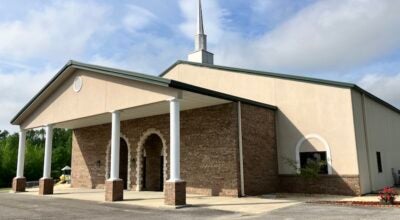Foreclosures slow in Alabama, more bumps ahead
Published 6:38 pm Sunday, August 10, 2008
MONTGOMERY – The increase in foreclosures in Alabama slowed during the first half of the year, but attorneys on both sides said this doesn’t mean the mortgage crisis is ending.
Instead, they said it points to the greater willingness of banks and other lenders, who don’t want more foreclosed homes sitting on their books, to work with buyers who are having trouble making payments.
During the first six months of this year, 3,529 homes in Alabama were in some stage of foreclosure, according to RealtyTrac, a company that follows foreclosures. That is up 10.1 percent from the 3,203 Alabama homes that were in foreclosure during the first half of 2007.
About one of every 600 homes in Alabama, or 16.7 percent of 1 percent, were in foreclosure during the first six months of this year.
That percentage didn’t even come close to putting the state among the leaders in foreclosures. Alabama had the seventh best rate in the country. Alabama ranked No. 43 nationally in foreclosures in the second quarter, down from No. 38 a year earlier.
Nationally, RealtyTrac reported almost 1.4 million homes in foreclosure in the first six months of this year, up from 573,397 a year earlier, a 142 percent increase.
RealtyTrac reports a home as being in foreclosure if a notice of default has been mailed, the home has been advertised for sale or if the bank has taken possession of the property. It reports properties in foreclosures, not total foreclosure filings, which means a single property could be listed more than once if it moves in and out of foreclosure during a specific period.
While Alabama is doing better than the rest of the country, no one is saying the state doesn’t have to worry about the foreclosure crisis in the future.
Kenneth Lay, an attorney with Legal Services Alabama, said the state has plenty of bumpy days ahead before it can declare the mortgage crisis over.
“I would say another 18 months, at least,” he said.
It will take that long for the last of the subprime adjustable rate mortgages to adjust, but Lay said that may not be the root cause of many Alabama mortgage defaults.
He said a softening economy means that some borrowers with more traditional mortgages may have trouble making the payments if their income falls.
Bowdy Brown, an attorney with Rushton, Stakely, Johnston & Garrett, said Alabama’s economy was better than most, meaning it may be easier for borrowers and lenders to work out compromises here to adjust a loan’s terms, allowing the borrower to keep the home.
“Our economy has been insulated to some degree,” he said.
Both attorneys said the mortgage crisis doesn’t mean there will be an accelerated pace of foreclosures.
Brown, in fact, said the banks he represents in the foreclosure process are doing whatever they can to avoid taking a home.
“The banks are more aggressive (about helping people keep their homes),” he said. “There are a number of programs, However, they all have qualifications.”
That means the rate of defaults – mortgages more than 30 to 60 days past due – is climbing faster than the actual number of foreclosure sales.
Brown said that five years ago, if he received a mortgage file from a lender, there was about a 70 percent chance it would go to a foreclosure sale. Today that rate is closer to 30 percent, he said.
“We are seeing more banks willing to work with people,” Lay said. “Part of that is government pressure.”
Brown said it is more a case of banks recognizing that in many situations, working with a borrower means more to the bottom line than taking a home with declining values.
While money is a factor, so is time, the two said.
“The sooner you let the lender know, the more likely they are to work with you,” Brown said.
Lay said earlier this summer that banks are willing to work with borrowers much earlier in the process.
Two years ago, a borrower had to be at least 30 days past due before the bank’s loss mitigation department would even return the call.
Now, a call that warns of future difficulty gets action, he said.
President Bush signed legislation recently to help more troubled borrowers stay in their homes, but Lay said that is not a cure-all for the situation.
“It will help some people, but it is not going to help everybody,” he said.
It will mostly help people who borrowed on bad loans, he said. Those borrowers can refinance into government-backed mortgages at more favorable terms.
People who are struggling because they are simply bringing in less money during difficult times will likely see little benefit from the latest bill.
“It is not going to help replace income,” he said.
People in homes that have lost value so that they are worth less than the mortgages still must work with their banks, he said.
Those lenders must agree to accept a lower payoff on the mortgage, or the program won’t work, Lay said.






